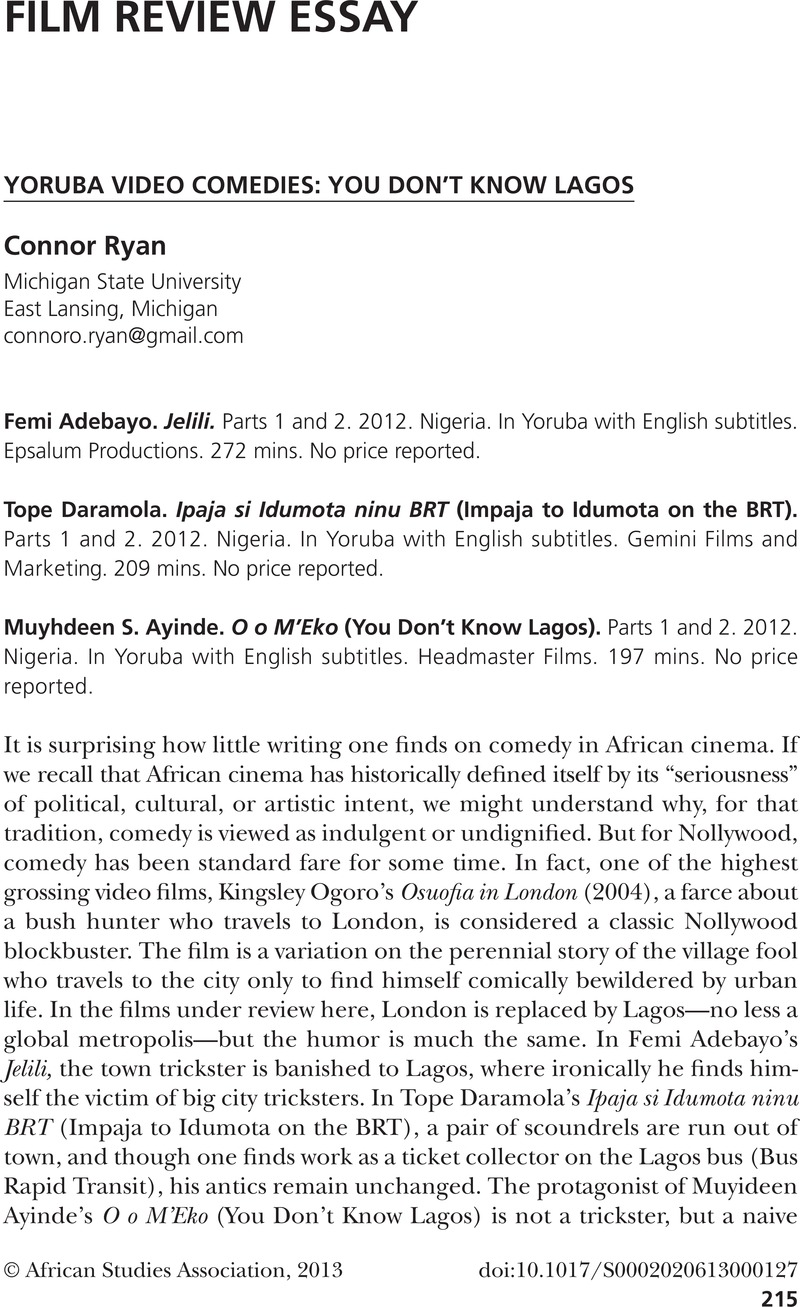No CrossRef data available.
Article contents
YORUBA VIDEO COMEDIES: YOU DON’T KNOW LAGOS - Femi Adebayo. Jelili. Parts 1 and 2. 2012. Nigeria. In Yoruba with English subtitles. Epsalum Productions. 272 mins. No price reported. - Tope Daramola. Ipaja si Idumota ninu BRT (Impaja to Idumota on the BRT). Parts 1 and 2. 2012. Nigeria. In Yoruba with English subtitles. Gemini Films and Marketing. 209 mins. No price reported. - Muyhdeen S. Ayinde. O o M’Eko (You Don’t Know Lagos). Parts 1 and 2. 2012. Nigeria. In Yoruba with English subtitles. Headmaster Films. 197 mins. No price reported.
Published online by Cambridge University Press: 20 May 2013
Abstract
An abstract is not available for this content so a preview has been provided. Please use the Get access link above for information on how to access this content.

- Type
- FILM REVIEW ESSAY
- Information
- Copyright
- Copyright © African Studies Association 2013
References
Fabian, Johannes. 2002. Time and the Other: How Anthropology Makes Its Object. New York: Columbia University Press.Google Scholar
Gandy, Matthew. 2006. “Planning, Anti-planning and the Infrastructure Crisis Facing Metropolitan Lagos.” Urban Studies 43 (2): 371–96.CrossRefGoogle Scholar
Larkin, Brian. 2008. Signal and Noise: Media, Infrastructure, and Urban Culture in Nigeria. Durham, N.C.: Duke University Press.Google Scholar
Okome, Onookome. 2003. “Writing the Anxious City: Images of Lagos in Nigerian Home Video Films.” Black Renaissance/Renaissance Noire 5 (2): 65–75.Google Scholar
Simone, AbdouMaliq. 1998. “Urban Social Fields in Africa.” Social Text 56: 71–89.CrossRefGoogle Scholar
Williams, Linda. 1991. “Film Bodies: Gender, Genre, and Excess.” Film Quarterly 44 (4): 2–13.CrossRefGoogle Scholar




